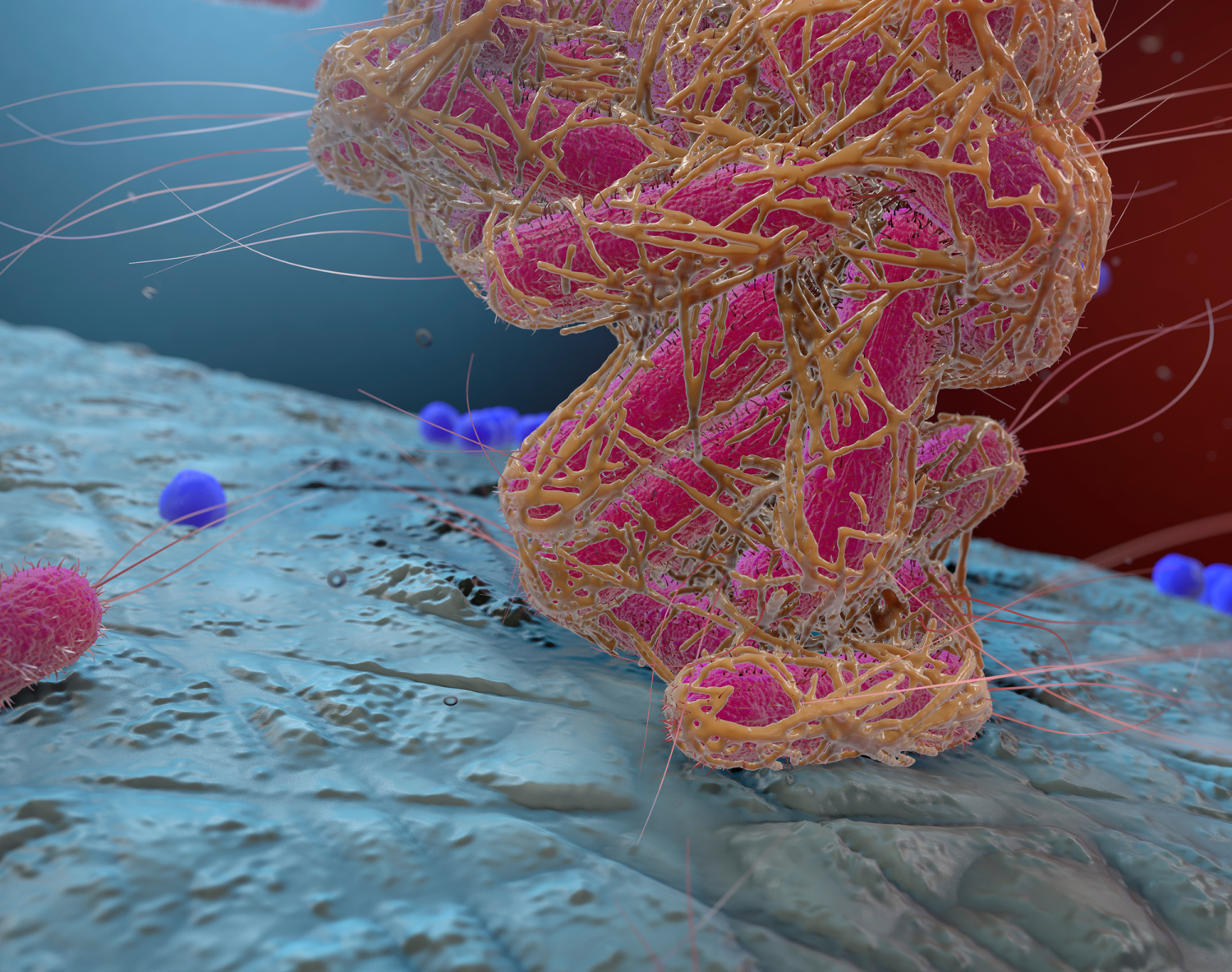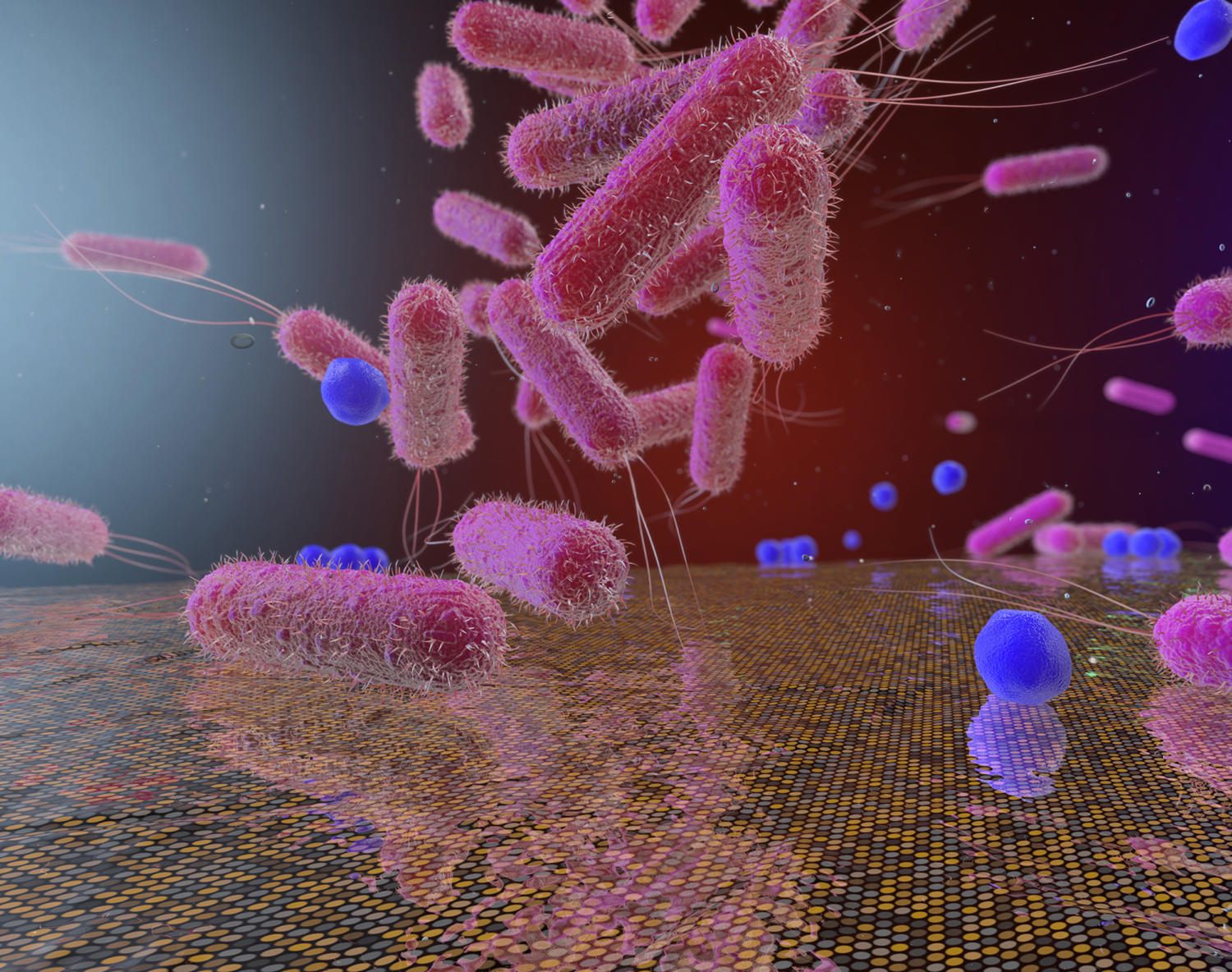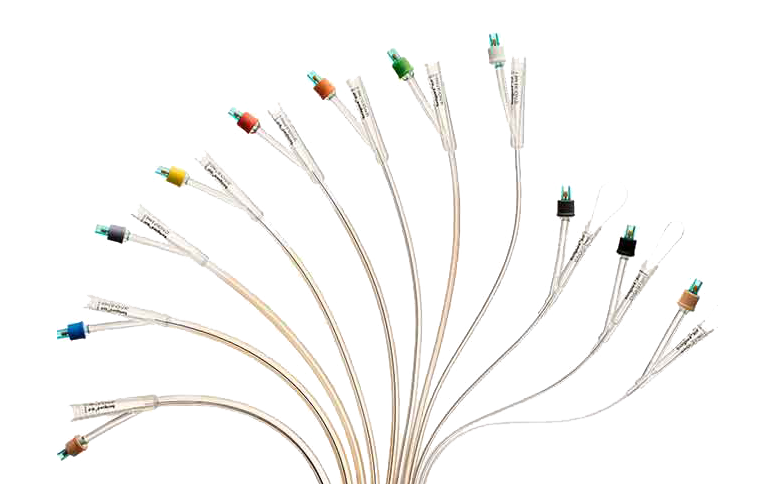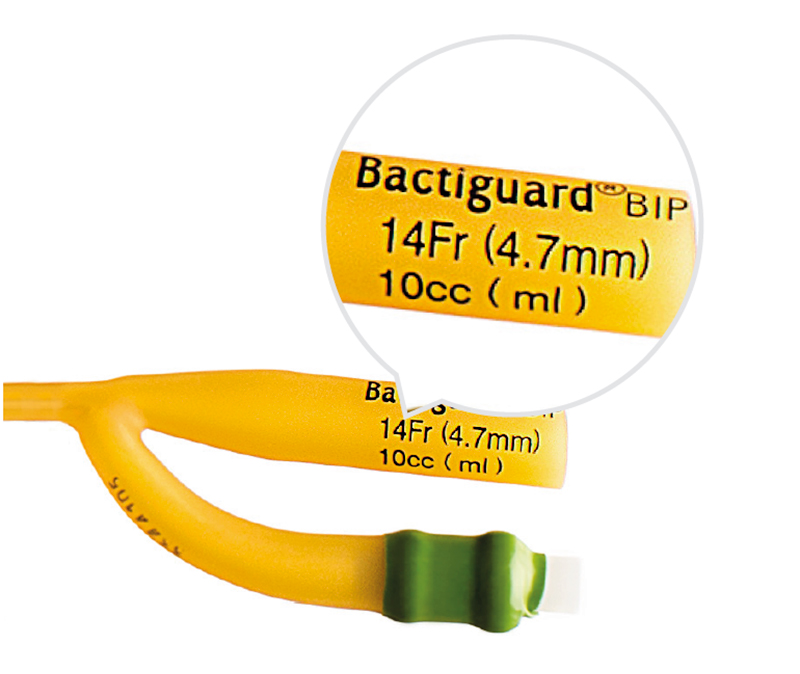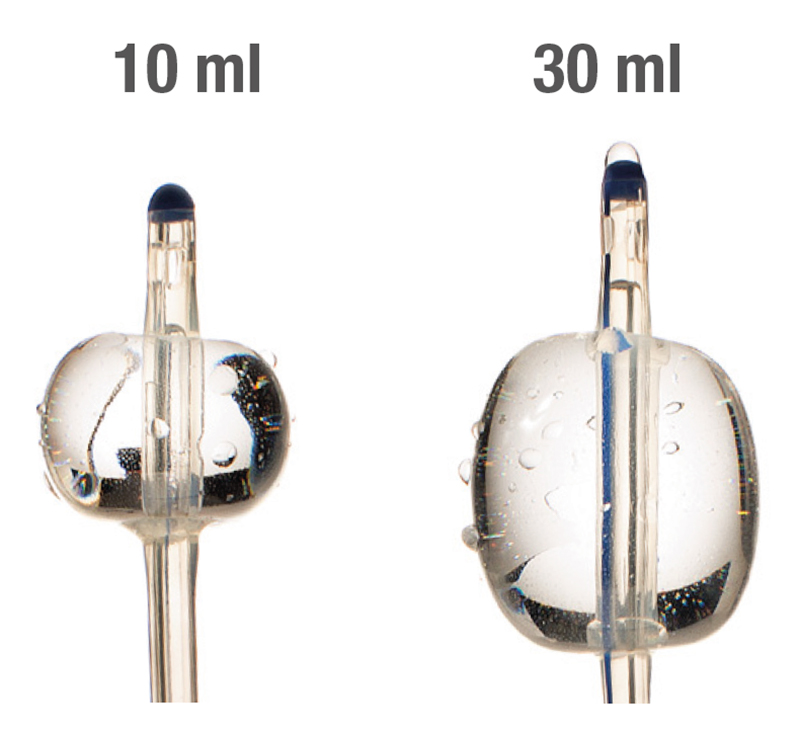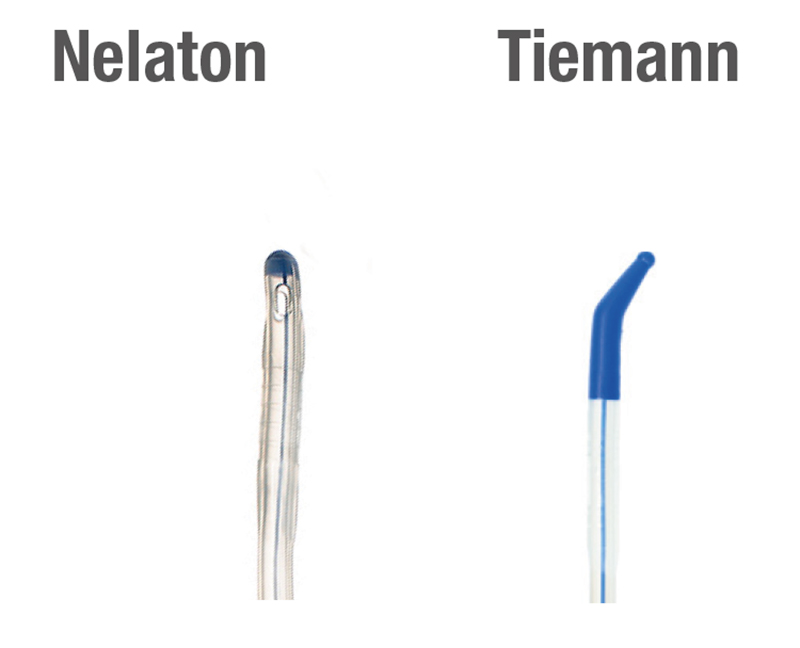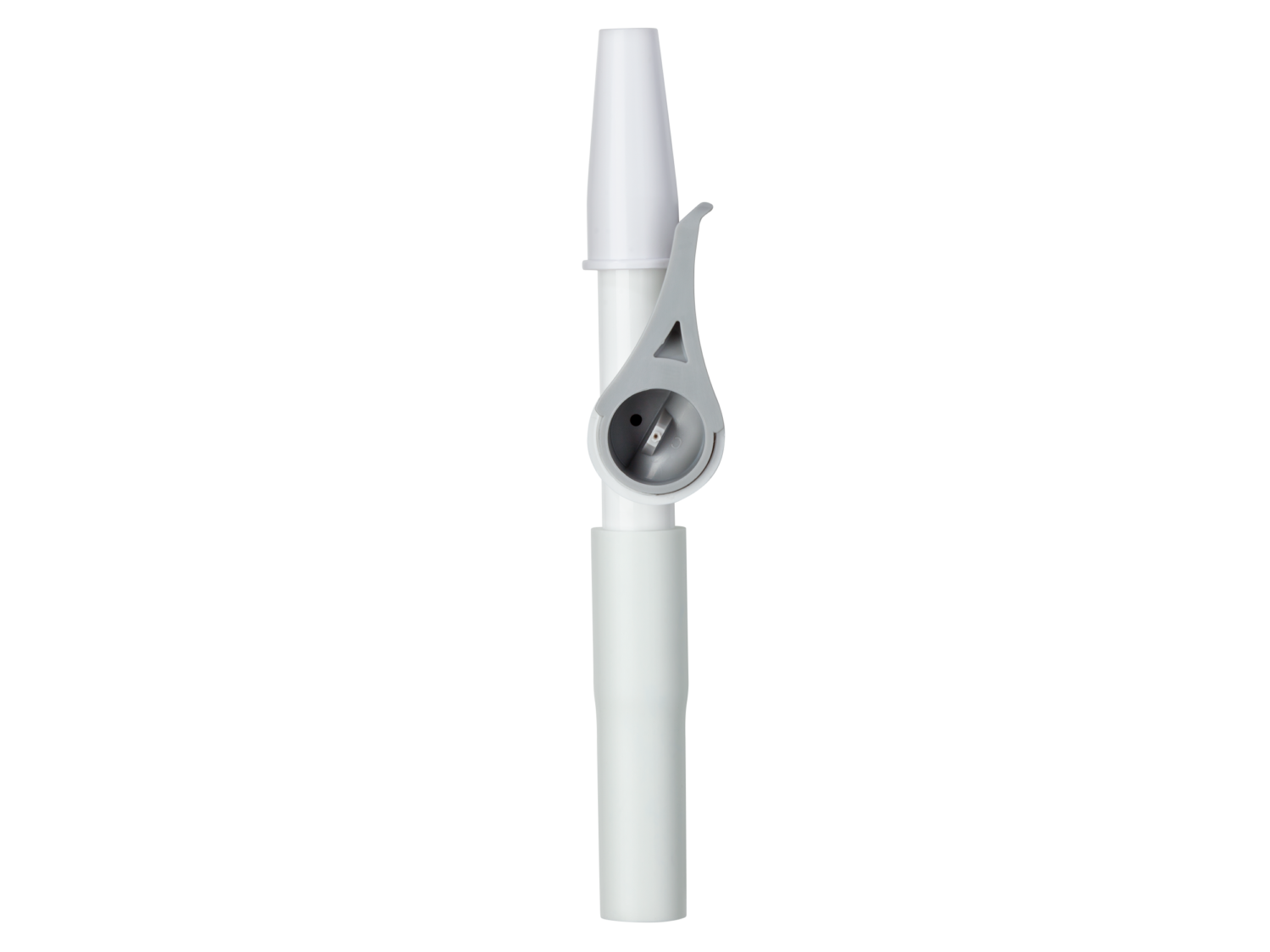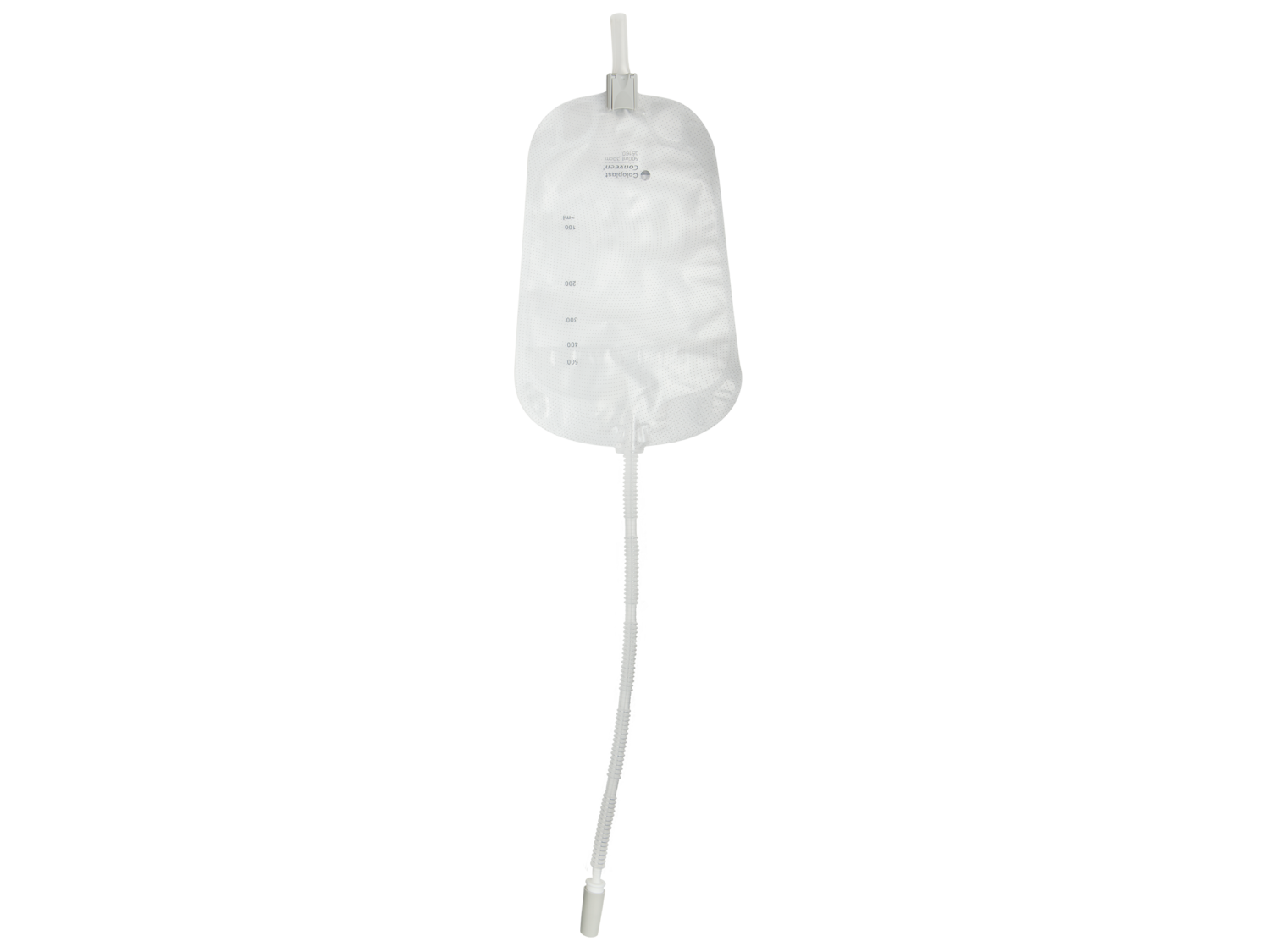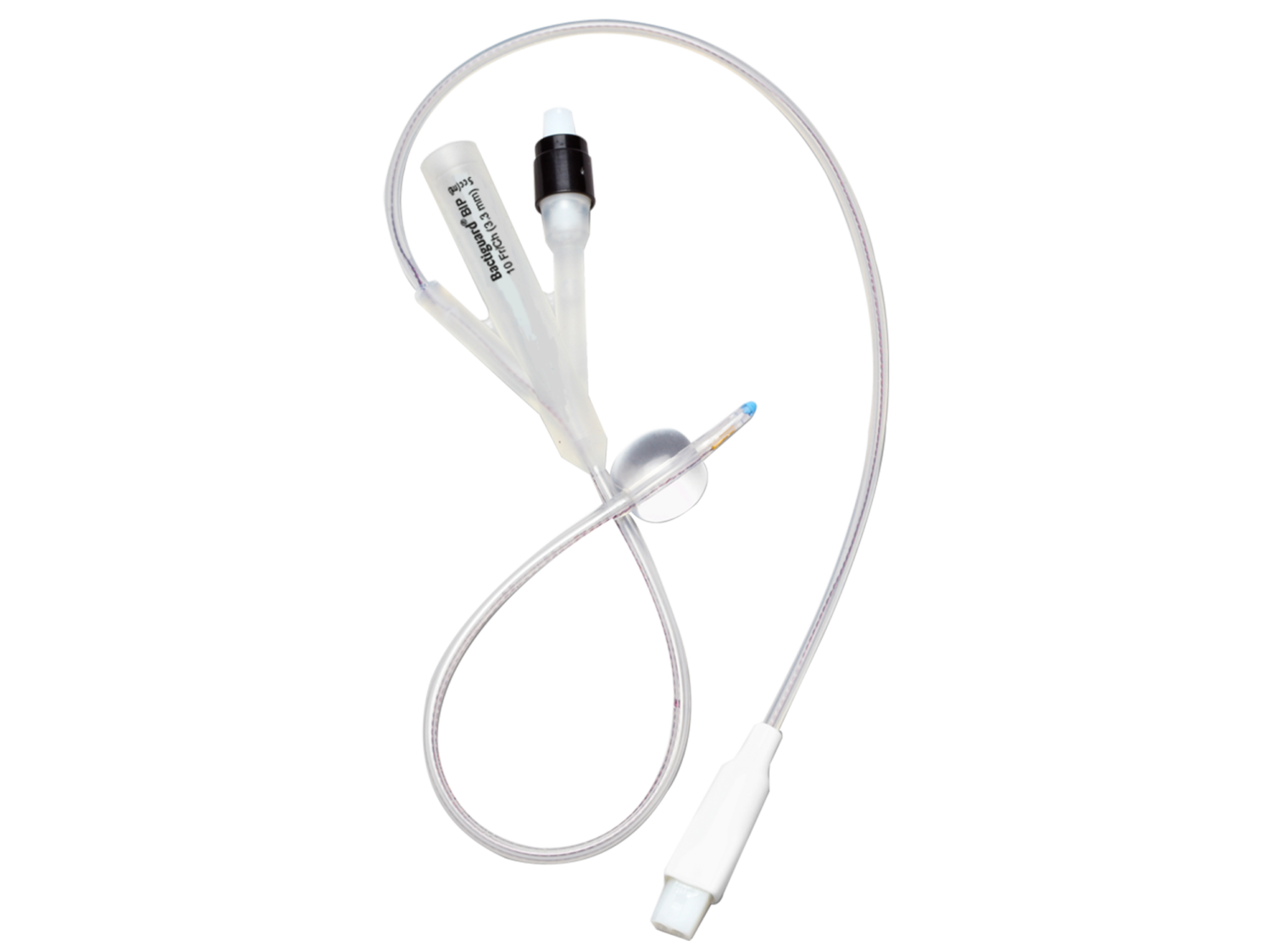Catheter material
The function of the core material is to create a hose with a cavity that can drain the urine. Indwelling catheters are available in several different materials. Today latex and silicone are the most commonly used materials. Each have pros and cons and it is important to choose the right material for each individual patient. Silicone is a firmer material than latex, and allows for a larger inner lumen while keeping the outer diameter the same size.
Latex
Latex is a very soft and flexible material, providing comfort for the patient. It should always be coated with a protective layer as latex otherwise can cause tissue irritation.
Latex catheters are cuffed with sterile water.
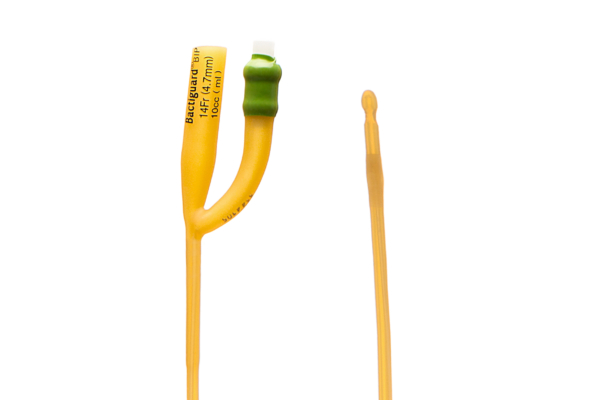
| + | Soft and comfortable Cuff with sterile water |
| – | Not for patients with latex allergy |
Silicone
Silicone is tissue friendly, hypoallergenic, and causes less irritation than latex.
Patients with a known latex allergy should not be treated with a latex catheter.
Silicone catheters are cuffed with sterile water for use up to 2 weeks; for longer term usage, glycerine solution should be used to avoid fluid diffusion.
![]()
| + | Tissue friendly and hypoallergenic Larger inner lumen than latex |
| – | Can be perceived as too stiff Risk to develop collar when deflated |
Coatings
There are different coatings on the core catheter material available on the market today. They might serve different purposes: to either protect the patient against the core latex material, to ease handling and provide more comfort, or to protect against infections.
Protect against latex – Silicone elastomer and PTFE
Latex catheters can be coated with a thin layer of silicone or teflon, to protect the patient’s tissue against latex.
Better comfort – Hydrophilic coating
Catheters with hydrophilic coating are highly biocompatible and have lower friction which provides better comfort for the patient. The hydrophilic coating also protects the tissue against latex.
Infection prevention – Bactiguard infection protection technology
Bactiguard’s infection prevention technology, BIP, is based on a very thin noble metal alloy coating, consisting of gold, silver and palladium, firmly attached to the urinary catheter. When in contact with fluid (urine), the noble metals create a galvanic effect. The microcurrents that occur reduce microbial adhesion, which decreases the risk of biofilm formation leading to urinary tract infection. Read more about the Bactiguard technology >>>
Catheter without infection protection
When enough bacteria have colonized the surface, they form a biofilm. If they begin to disperse, there is an increased risk of infection. Read more about catheter-related urinary tract infection >>>
Catheter with Bactiguard coating
Less bacteria adhere to the Bactiguard coated surface, which decreases the risk for biofilm formation leading to infection.
Releasing coatings
There are also coatings where the mechanism is to release antimicrobials such as silver ions, chlorhexidine or antibiotics that kill microbes. This may only have a short term effect and could potentially harm the patient’s tissue.
Catheter size
The outer diameter of the catheter is measured in Charrière (Ch) also known as French Gauge (Fr). A catheter with a large diameter can expose the mucosa of the urethra to too much pressure, resulting in tissue damage. If the diameter on the other hand is too small, it will take too long for the urine to exit which increases the risk for catheter blockage.
A general rule of thumb is to use the smallest possible catheter that will do the job.
The most common sizes used with adults are 12 Fr and 14 Fr, sometimes 16 Fr. Urinary catheters mostly use color coding for different sizes, such as:
| Size | Colour | To be used for: |
| 12 FR | White | Normally liquid urine |
| 14 FR | Green | Normally liquid urine |
| 16 FR | Orange | Cloudy urine, blood in the urine without clots |
Balloon size
When the catheter has been inserted all the way into the bladder the balloon is inflated to keep the catheter in place. The balloon should be inflated with the amount that is indicated on the catheter connection, behind the size of the catheter. For example 14 Fr/10cc.
Use the smallest possible balloon to keep the catheter in place in the bladder.
Over- or underinflation can lead to catheter complications such as bladder spasms. Overinflation may also result in increased residual urine volume as the balloon sits higher in the bladder. An oversized balloon puts unnecessary pressure on the sensitive bladder bottom. An undersized balloon on the other hand, might fall down into the urethra.
Inflate the balloon with liquid according to the manufacturer’s recommendations.
10cc (ml) is the most common balloon size, suitable for most patients. 30cc (ml) or even more is only needed for special interventions when more pressure needs to be applied to stop bleeding, for example after prostate resection.
Tip design
Urinary catheters are available with different tip designs. The most used tip for routine catheterization is the Nelaton tip which is round with two drainage eyes. Due to the challenging curvature of the male urethra, a catheter with a curved tip can be used to ease insertion; this type is called a Tiemann tip and is the second most common.
Catheter valve
When the urine can be stored in the bladder, a catheter valve can be connected to the catheter. The valve is opened on a regular basis to empty the bladder. By using a valve, a drainage bag is not needed which might be more comfortable. A catheter valve also offers a potential for maintaining certain bladder functions and tone by allowing the bladder to fill and empty regularly.
Drainage bag
When the urine can’t be stored in the bladder, a drainage bag is recommended where the urine is collected. A drainable bag postpones bacterial invasion. There are a large variety of sizes of bags and lengths of tubes available. At daytime, a drainage bag of approximately 500 ml can be recommended and at nighttime a larger one is preferred. Drainage bags should be appropriately fixated on the leg of the patient or another adequate location.
Reflect on the purpose of the catheter treatment. Can the urine be stored in the bladder?
Special catheters
There are also a series of special catheters of which the following are the most commonly available.
Temperature sensor
The temperature sensor silicone catheter is a regular indwelling catheter with an integrated temperature sensor. This type of catheter is sometimes used within intensive care and during certain surgical procedures. The catheter has a sensor near the tip, which measures the temperature of the urine in the bladder. This is an accurate means of determining core body temperature.
Pediatric catheters with insertion guidewire
Some catheters, most often pediatric sizes, have an insertion guidewire that provides stabilization during catheterization of patients with the smaller size catheters.
Hematuria
If coagulated blood or tissue pieces need to be flushed out, a larger catheter may be necessary. A hematuria catheter is designed to allow manual or continuous flushing. Be extra cautious when placing a hematuria catheter, and use generous amounts of catheter gel (about 30-40 g for men).
Source: All material has been written and reviewed by Märta Lauritzen, registered nurse and urotherapist and Helena Thulin, registered nurse and PhD, Karolinska University Hospital, Stockholm.

